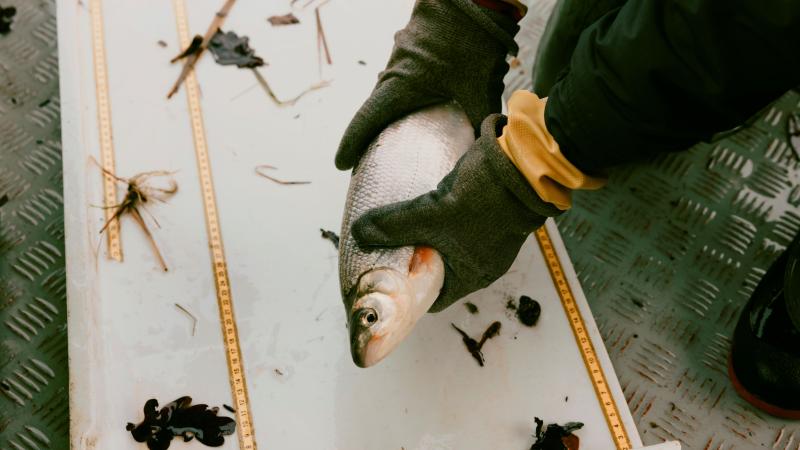
As part of our "Wanderfisch" project, children and young people sent the sturgeon on journeys. | Photo: Philipp Freudenberg
The ‘Wanderfisch‘ project is embedded in the Science Year 2016*17 and creates the link between maritime and limnic ecosystems. Here the migrating sturgeon plays an important role since it spends a major part of its life in the sea but moves upstream the river for spawning. Once, sturgeons belonged to Europe's endemic species but due to i.e. the destruction and pollution of its habitats or the introduction of foreign species the sturgeon has gone extinct in Germany and other parts of Europe. Since 1996, the IGB is involved in the rearing and reintroduction of sturgeons in close cooperation with the ‘Gesellschaft zur Rettung des Störs e.V.‘. In the current project, these actions are jointly coordinated with several educational institutions in order to involve children in topics of species/ nature conservation. Besides the conduction of stocking activities, Gewässerkisten as well as integrated informational material will stimulate pupils and teacher to create autonomous projects and excursions. Due to its experience in planning and implementing new educational contents in schools BildungsCent e.V. represents an important partner for this project.
Background
Migratory fish such as sturgeon, salmon, allis shad, houting or eel connect the sea with the coastal areas and our rivers. While other fish can live in a single stream or lake, migratory fish are demanding: just like humans, they look for the right environment for every phase of life. They spend the majority of their lives in the sea, but to reproduce, they drag our rivers up hundreds of kilometres.
Sturgeons - the largest migratory and river fish of our latitudes - once belonged to the permanent inventory of European waters. But weirs, pollution and the development of waterways blocked the way for the animals into their spawning grounds and deprived the fish larvae of their livelihood and food. Combined with unsustainable fishing, stocks collapsed dramatically towards the end of the 19th century. Our native sturgeons are now among the most endangered fish species in the world: In Germany they are considered extinct, in the rest of Europe there is only one stock left in France. The sturgeon is thus also representative of the global biodiversity crisis that has hit the underwater world particularly hard. Measures to protect sturgeons - such as improving habitats - also benefit other species and the entire ecosystem.

Science Year 2016*17 - Seas and Oceans
Marine research was the topic of the Science Year 2016*17. 71 percent of our planet is covered by oceans and seas. They are climate machines, food sources, economic areas - and they provide space for many plants and animals to live. Scientists have been studying the oceans for centuries; yet they are still mysterious and largely unexplored. In the Science Year 2016*17 - Seas and Oceans, the focus was on the exploration, protection and sustainable use of water. The Science Years are an initiative of the Federal Ministry of Education and Research (BMBF) and Science in Dialogue (WiD). As a central instrument of science communication, they bring research to the public. The science year 2016*17 was accompanied by the German Marine Research Consortium (KDM) as a technical partner.
Short Profile
Duration
Federal Ministry of Education and Research (BMBF)




